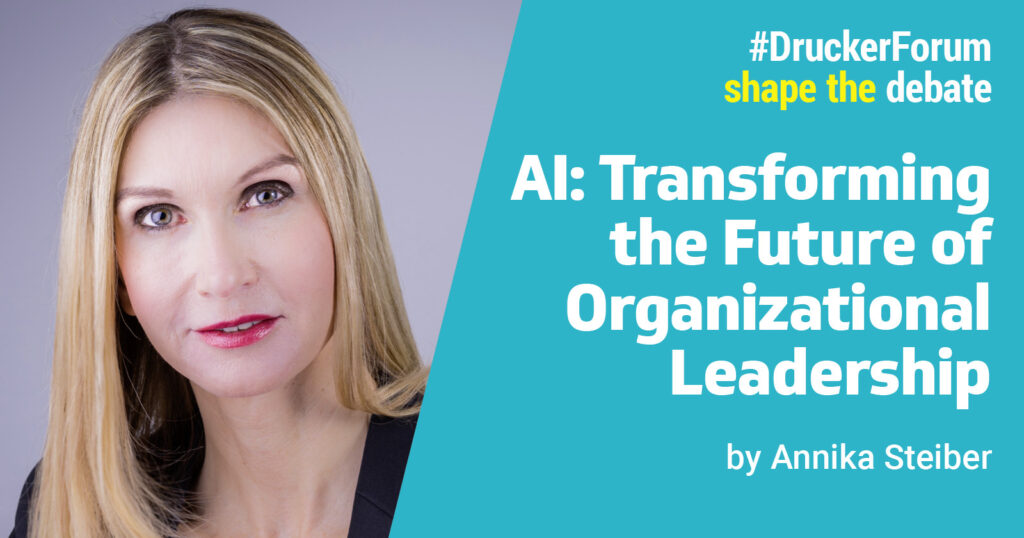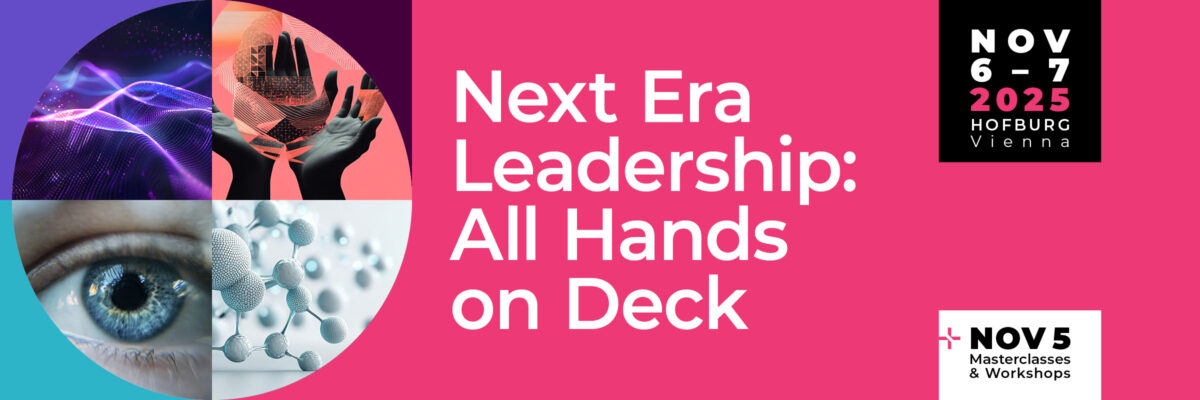
Artificial Intelligence (AI) is fast becoming a core element of business performance. From generating content to automating workflows, generative and agentive AI are changing how organizations operate. Yet amid the media buzz and market hype, it’s important to separate substance from sensation. AI is not a force that will replace human leadership—it’s a tool that, when used well, will enhance decision-making, improve effectiveness and efficiency, and empower transformation.
Peter Drucker reminded us that efficiency is doing things right; effectiveness is doing the right things. AI can help leaders do both—but its greatest value may lie in making executives more effective, not just more efficient. Used well, AI gives back time—the most precious leadership resource—for reflection, insight, and strategic action. This article explores four strategic domains where AI is reshaping leadership and organizational design: governance, structure, communication, and leadership itself.
1. Governance: Smarter Oversight, Not Autonomous Control
AI introduces a new dimension to governance—augmenting decision-making, enhancing compliance, and enabling real-time oversight. Boards are no longer debating if AI should be explored; they’re grappling with how to apply it responsibly. This has led to the rise of AI governance functions designed to handle algorithmic bias, transparency, and ethical deployment.
Some organizations are even piloting AI-driven ‘robo-advisors’ in boardrooms. These systems analyze vast datasets and produce impartial recommendations at speed. But their role is strictly supportive—AI cannot replace human accountability or moral judgment. Instead, it enhances situational awareness, enabling decision-makers to focus on what matters most. AI doesn’t replace control—it enhances it through insight.
2. Structure: Enabling Flat, Agile Organizations
AI is flattening organizations by automating tasks traditionally handled by middle management—from scheduling to workflow coordination. This enables fewer people to manage more complexity with greater speed.
As a result, companies are rethinking traditional hierarchies. Some are reducing management layers and broadening spans of control, resulting in faster decisions and less bureaucracy. AI acts as an always-on operations partner—flagging issues, aligning teams, and surfacing insights. The goal is not downsizing, but increasing responsiveness and resilience.
Yet here’s a critical caveat: leaders must resist the temptation to use AI simply as a productivity engine. Don’t use it to extract “a quart from a pint pot.” Instead, treat AI as a time machine—freeing up bandwidth for innovation, strategic thinking, and human connection. That’s where the real ROI lies.
3. Communication: From Periodic to Continuous Intelligence
AI is revolutionizing how information flows inside organizations. Smart assistants and language models are turning communication into a real-time, data-driven process. Employees receive tailored nudges, summaries, and decision support—eliminating delays and information overload.
For leaders, this reduces the need for micromanagement. For teams, it improves transparency and speeds up feedback loops. AI can also monitor sentiment across the organization, enabling faster interventions. In hybrid and distributed workplaces, this infrastructure is crucial for maintaining cohesion and culture. The result is not more communication—but smarter communication.
4. Leadership: From Command to Coordination
Perhaps the most profound shift is in leadership itself. As AI handles routine managerial tasks like reporting and resource allocation, leaders must evolve into facilitators of empowered teams and curators of decision ecosystems.
Leadership in the AI era is about removing friction, enabling access to the right tools, and fostering a culture of experimentation. It’s about blending human intuition with machine intelligence—and leading with judgment, empathy, and purpose.
And above all, it’s about making room for what Drucker championed: thinking time. AI should not push leaders to do more, faster. It should help them do better, with greater clarity.
5. Culture, Ethics, and Emerging Organizational Models
AI’s impact on culture is often underestimated. As it takes over more analytical and routine work, the nature of learning, collaboration, and innovation shifts. Organizations must build cultures that support experimentation, data-driven decision-making, and continuous re-skilling. That means integrating AI literacy into talent development strategies and fostering adaptability across all levels.
Equally important is ethics. As AI begins influencing decisions that affect people and society, fairness, transparency, and accountability become essential. Leaders must embed ethical thinking into the DNA of their organizations—beyond compliance, into everyday conversations.
Finally, AI opens doors to new organizational forms: distributed autonomous units, algorithmic coordination, and global talent networks. These emerging models promise agility, but they require strong digital infrastructure and shared purpose to succeed.
Conclusion: Strategic, Not Sensational
For executives, the message is clear: don’t get caught up in the AI hype. Stay grounded. Stay strategic. Focus on where AI can solve real problems. Because the future won’t be led by machines—it will be led by humans who know how to use machines well.
About the author:
Dr. Annika Steiber is a senior executive, advisor, author, and researcher with a Ph.D. in Management of Technology from Chalmers University in Sweden. Dr. Steiber has for decades conducted research on management for quality and innovation in a fast-changing world in parallel with senior executive, advisory, and board positions. She was in 2024, the author of over 60 well-cited research papers and 17 scientifically based management books including The Google Model: Management for Continuous Innovation in a Rapidly Changing World, The Silicon Valley Model: Management for Entrepreneurship, and Managing in a Digital Age: Will China Surpass Silicon Valley?
For five years, she was a professor and Director for Entrepreneurship & Innovation at Menlo College (California, USA) and is currently the CEO of Management Insights, and the RenDanHeYi Silicon Valley Research Center in parallel with acting as an ISO TC 279 and Singularity University expert.

